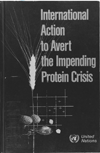The Rise and Fall of Protein Malnutrition in Global Health
- PMID: 27576545
- PMCID: PMC5114156
- DOI: 10.1159/000449175
The Rise and Fall of Protein Malnutrition in Global Health
Abstract
Background: From the 1950s to the mid-1970s, United Nations (UN) agencies were focused on protein malnutrition as the major worldwide nutritional problem. The goal of this review is to examine this era of protein malnutrition, the reasons for its demise, and the aftermath.
Summary: The UN Protein Advisory Group was established in 1955. International conferences were largely concerned about protein malnutrition in children. By the early 1970s, UN agencies were ringing the alarm about a 'protein gap'. In The Lancet in 1974, Donald McLaren branded these efforts as 'The Great Protein Fiasco', declaring that the 'protein gap' was a fallacy. The following year, John Waterlow, the scientist who led most of the efforts on protein malnutrition, admitted that a 'protein gap' did not exist and that young children in developing countries only needed sufficient energy intake. The emphasis on protein malnutrition waned. It is recently apparent that quality protein and essential amino acids are missing in the diet and may have adverse consequences for child growth and the reduction of child stunting. Key Messages: It may be time to re-include protein and return protein malnutrition in the global health agenda using a balanced approach that includes all protective nutrients.
© 2016 S. Karger AG, Basel.
Conflict of interest statement
no conflicts of interest
Figures
References
-
- Carpenter KJ. Protein and Energy: A Study of Changing Ideas in Nutrition. Cambridge: Cambridge University Press; 1994.
-
- Bhutta ZA, Salam RA, Das JK. Meeting the challenges of micronutrient malnutrition in the developing world. Br Med Bull. 2013;106:7–17. - PubMed
-
- Stevens GA, Bennett JE, Hennocq Q, Lu Y, De-Regil LM, Rogers L, et al. Trends and mortality effects of vitamin A deficiency in children in 138 low-income and middle-income countries between 1991 and 2013: a pooled analysis of population-based surveys. Lancet Glob Health. 2015;3:e528–e536. - PubMed
Publication types
MeSH terms
Substances
Grants and funding
LinkOut - more resources
Full Text Sources
Other Literature Sources
Medical
Miscellaneous


